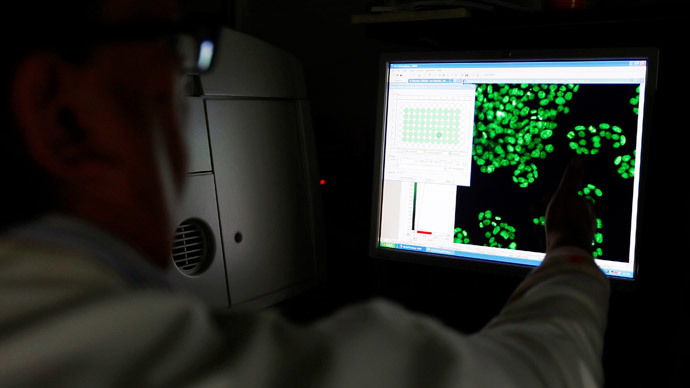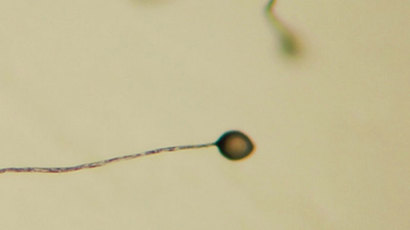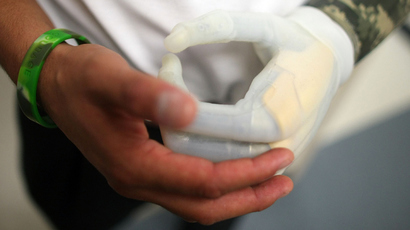Nanomotors in vivo: Tiny motors set to motion in live human cells

For the first time tiny rocket-shaped synthetic motors have been placed inside live human cells. What has been a staple of science fiction is now a promising method to treat cancer, US scientists say.
The researchers from Penn State University have successfully
embedded synthetic nanomotors into HeLa cells, an immortal line
of human cervical cancer cells typically used in research
studies, according to a press release published on the
university’s website.
"As these nanomotors move around and bump into structures
inside the cells, the live cells show internal mechanical
responses that no one has seen before," said Tom Mallouk,
Evan Pugh Professor of Materials Chemistry and Physics at Penn
State. The findings were published in the journal Angewandte
Chemie International Edition on Monday.
Until now the researchers studied nanomotors only "in
vitro” - in a laboratory apparatus, said Mallouk, adding
that the experiment in human cells was performed for the first
time.

Similar nanomotors were developed at Penn State University ten
years ago, however they were chemically powered and could not
move in cells.
"Our first-generation motors required toxic fuels and they
would not move in biological fluid, so we couldn't study them in
human cells," Mallouk said. "That limitation was a
serious problem."
Then the research team made a breakthrough by discovering that
the ‘tiny rockets’ could be powered by ultrasonic waves.
Using low ultrasonic power the nanomotors have little effect on
the cells, however when the power is increased they start
actively moving “bumping into organelles - structures within
a cell that perform specific functions,” Mallouk explained.
“The nanometers can act as egg beaters to essentially
homogenize the cell's contents, or they can act as battering rams
to actually puncture the cell membrane,” according to the
press release.
In addition to the fact that researchers managed to control the
motors by steering them, Mallouk and his colleagues also
discovered that the nanomotors can move independently of one
another.
"Autonomous motion might help nanomotors selectively destroy
the cells that engulf them," Mallouk said. "If you want
these motors to seek out and destroy cancer cells, for example,
it's better to have them move independently. You don't want a
whole mass of them going in one direction."
The breakthrough has potential for the development of medicine,
such as intracellular surgery and the delivery of drugs
noninvasively to living tissues, Mallouk believes.
“We might be able to use nanomotors to treat cancer and other
diseases by mechanically manipulating cells from the
inside.”
"One dream application of ours is Fantastic Voyage-style
medicine, where nanomotors would cruise around inside the body,
communicating with each other and performing various kinds of
diagnoses and therapy. There are lots of applications for
controlling particles on this small scale, and understanding how
it works is what's driving us."














